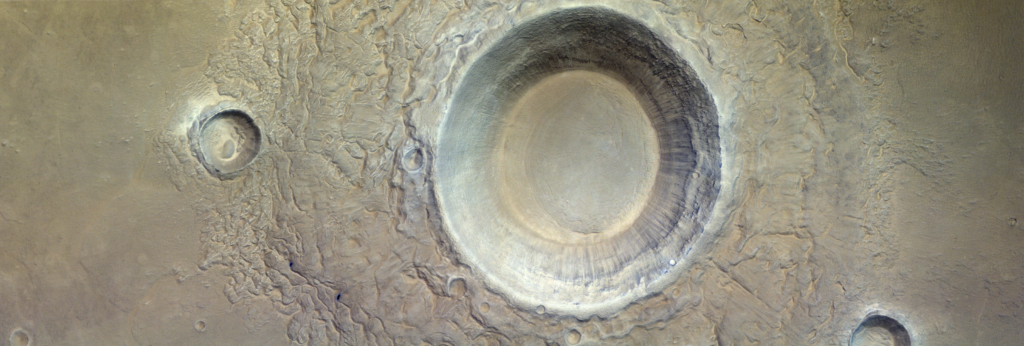The European Space Agency has published an image taken by the TGO spacecraft. It photographed an unnamed crater on the surface of the Red Planet.

The formation photographed by TGO is located in the middle of the Utopia Planitia, the largest confirmed impact crater in the Solar System. Its diameter is about 3,300 km, which is twice the size of the Sahara Desert, measured from north to south. This region is known to scientists for the intriguing ice-related features observed on and under its surface, including frost during the Martian winter.
As for the crater itself, its image was taken using the CaSSIS camera when the TGO flew over this area at an altitude of about 400 km. Its diameter is 8 km. According to scientists, the ejected material indicates the presence of water ice. When the asteroid crashed into this area of Mars, the ice melted, and a mixture of liquid water and dusty rocks was ejected from the upper layers.
The smooth appearance of the crater is consistent with other craters in the region indicating the presence of ice. When you zoom in on the crater, you can see streaks on its walls indicating landslides and ripples created by the wind.
This remnant of an ancient impact is just one of the many scars left by asteroids. Their impacts, as well as water and volcanic activity, formed the Martian surface in the distant past. Currently, Mars is a cold, dry desert.
Earlier, we talked about how ESA and NASA joined forces on the ExoMars mission.
According to ESA
Follow us on Twitter to get the most interesting space news in time
https://twitter.com/ust_magazine


